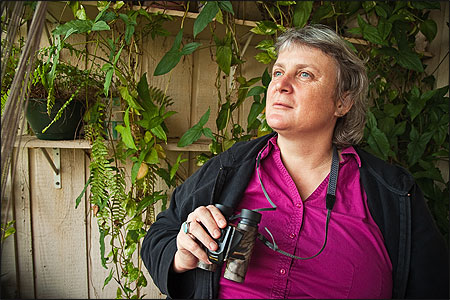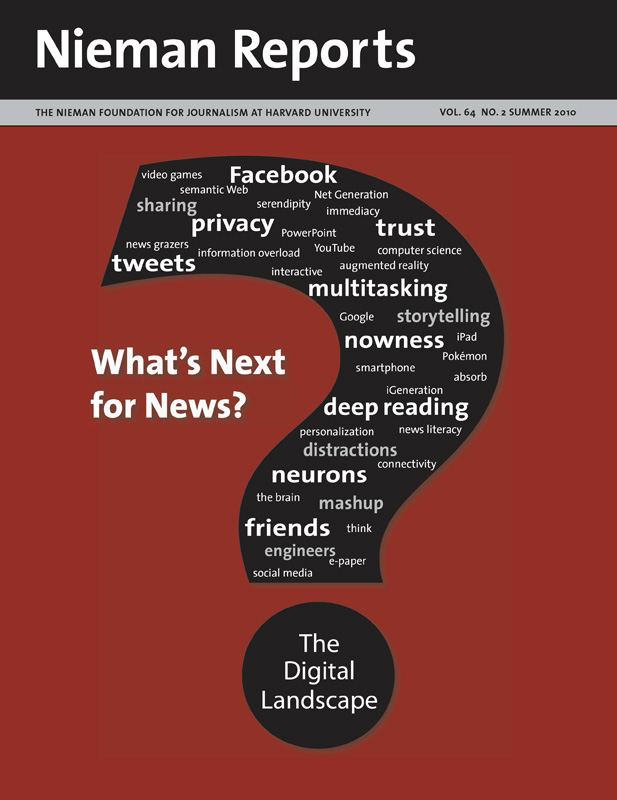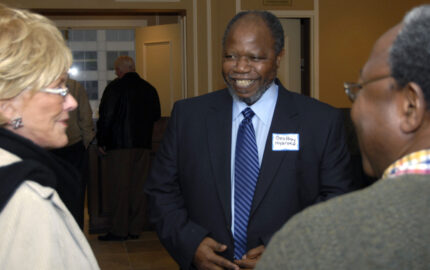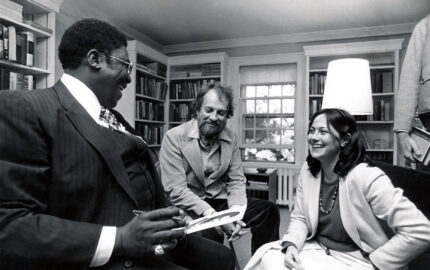
When Paige Williams, a 1997 Nieman Fellow, couldn’t find a home for a story she was passionate about, she published it online and set out to crowdfund her expenses. Donations and praise reached her Web site. But is the approach she calls “Radiohead journalism”—a term adapted from a 2007 experiment in online music sales—a viable way to keep narrative journalism alive? In this article, adapted from one she wrote for Wired.com, Williams reports on her experiment.
I pitched the whole world on Dolly Freed. Seriously, every magazine you can think of and a hundred more. Nobody was interested in a profile of a woman who used to eat roadkill, make moonshine, and sit around reading Jean-Paul Sartre with her alcoholic and probably-genius father; a woman who later went on to get her GED, put herself through college, and become a NASA rocket scientist who helped figure out the mess behind the Challenger explosion before turning her back on that world for a life that felt more authentic. Yeah, I can’t see the appeal whatsoever.
So after months of rejection, I bought myself a Web site and in January used it to self-publish a long-form feature story called “Finding Dolly Freed.”
In 1978 the pseudonymous Dolly Freed wrote a book called “Possum Living: How to Live Well Without a Job and With (Almost) No Money.” She was 18 and had a seventh-grade education. She used a pseudonym because she was a teenage truant and because she and her father had an intriguing relationship with the law. After a slightly surreal post-publishing blitz that included an appearance on “The Merv Griffin Show,” Dolly slipped out of sight. In the ensuing decades, fans wondered what had become of her. What became of her was Texas, among other things. She now lives and works outside Houston as an environmental educator, and she goes by her real name, which I promised not to reveal. She still lives a frugal lifestyle. Dolly is, she told me, “half-possuming.”
Having lost my job two days before hearing about Dolly, in the worst months of the economic meltdown, I felt that she was a story for our times. “Possum Living” was scheduled to be re-issued in January by Tin House.
Late last year The New York Times bought Dolly (yay!) for its Style pages but killed it (boo!) when I declined to reveal Dolly’s real name. So I hired a Web designer and ran the piece online.1 I included a PayPal link in hopes of recouping some of the $2,000-plus I spent on the project. Anybody could read “Finding Dolly Freed” for free but had the option to donate whatever amount they chose, sort of the way the English alternative rock band Radiohead did with their 2007 album “In Rainbows.”
At that point, the Dolly Freed project became not only an exercise in self-publishing but also an experiment. Would readers pay for a story that they could read for free on an independent Web site by a writer they’d never heard of?
Lessons Learned
Here are a few things I learned in transforming rejection into success:
- Social media work. I used Twitter and Facebook to spread the word after posting “Finding Dolly Freed.” Powerful folks online are critical to the dialogue. If Adam L. Penenberg, the author of “Viral Loop: From Facebook to Twitter, How Today’s Smartest Businesses Grow Themselves,” and New York University professor Jay Rosen hadn’t tweeted about the project, it never would have entered this particular sliver of the public consciousness in a way that compelled other journalists to talk about it.
- People are awesome. A few of the characters behind the Dolly project worked for no money or for expenses only. My talented pal Audra Melton jumped on a plane to Texas to photograph Dolly, for literally no paycheck. (In fact, I’m pretty sure she lost money in the deal.) Another friend, Geoff Gagnon, then an editor at Boston magazine and now at The Atlantic, edited the piece, and refused to accept a dime. Everyone else got paid (the fact checker, the copy editor), and those expenses went into the debit column along with Audra’s travel, my initial travel to Texas (air, hotel, car), Web site expenses ($800 for design plus other fees for Web hosting, domain registration, etc.), and miscellaneous FedEx and photocopying charges.
- You’ve got to burp the baby. I thought I could release Dolly into the wild and my work would be done. Puh. Once you birth the baby you gotta feed her, change her diapers, protect her from bullies, take her out into public. The back-end work included tweaking the site, answering queries, tweeting and retweeting, and monitoring the Web for mentions or questions that needed either immediate attention or restrained silence. Momentum dies without a master.
Minutes after the site went live, the first donation via PayPal arrived. The contributions came regularly for weeks, in amounts ranging from 50 cents to $100. Three people gave $100, including Penenberg, who’d done such great tweeting about it, and Hank Stuever, a wonderful Washington Post feature writer who e-mailed me these words:
I’m happy to feel strongly enough about what you do—what we do—to put money behind it. I feel it all going away: serendipitous stories, lark, wonder, exploration, heart. Everything in the newsroom now is just reactive, scoop-centered, gossipy, fuss-and-chit-chat. I have lots of thoughts about that, which I’m still sorting through, and may never sort through.
As of early June, donations totaled $2,100. I earned an extra $500 when Audible.com asked me to record the story as part of the “Possum Living” audiobook. And get this: Although a kill fee usually runs 20 percent, the Times paid me a 50 percent kill fee. These two checks put me over the top. I made back the out-of-pocket money I spent reporting the story and earned a few hundred extra to plow back into the Web site.
Judging the Outcome
So did Radiohead journalism succeed? I guess it depends on the definition of success. In the strictest sense of the word, yes, it worked: I recovered my costs. Yet given the visitor-donation ratio—roughly 200 of more than 5,000 visitors from around the world contributed—this doesn’t portend to be a sustainable model, at least not in its current form. I choose to look at it this way: People sent money they didn’t have to spend to a person they didn’t even know. That, to me, is wondrous.
Someone else may find a better way, and I hope they do. I’d be thrilled to see independent self-publishing models for journalism fly, as long as the authors adhere to inviolable standards of accuracy, fairness, solid ethics, and reporting. Institutional backing confers credibility, but in the wilds of the Internet, trust begins and ends with the storyteller and his or her integrity and approach.
After oxygen and carbon, humans are made up of stories; telling and craving them is elemental to our existence. Storytelling will never die. The vexing question is where we’ll tell our stories, and how, and how to monetize online narrative without bastardizing it. The good news is that it’s anybody’s game.
Paige Williams is executive editor of Boston magazine and has taught journalism at New York University and Emory University. She won the 2008 National Magazine Award for feature writing and has written for The New York Times, New York magazine, Salon.com, and GQ.



